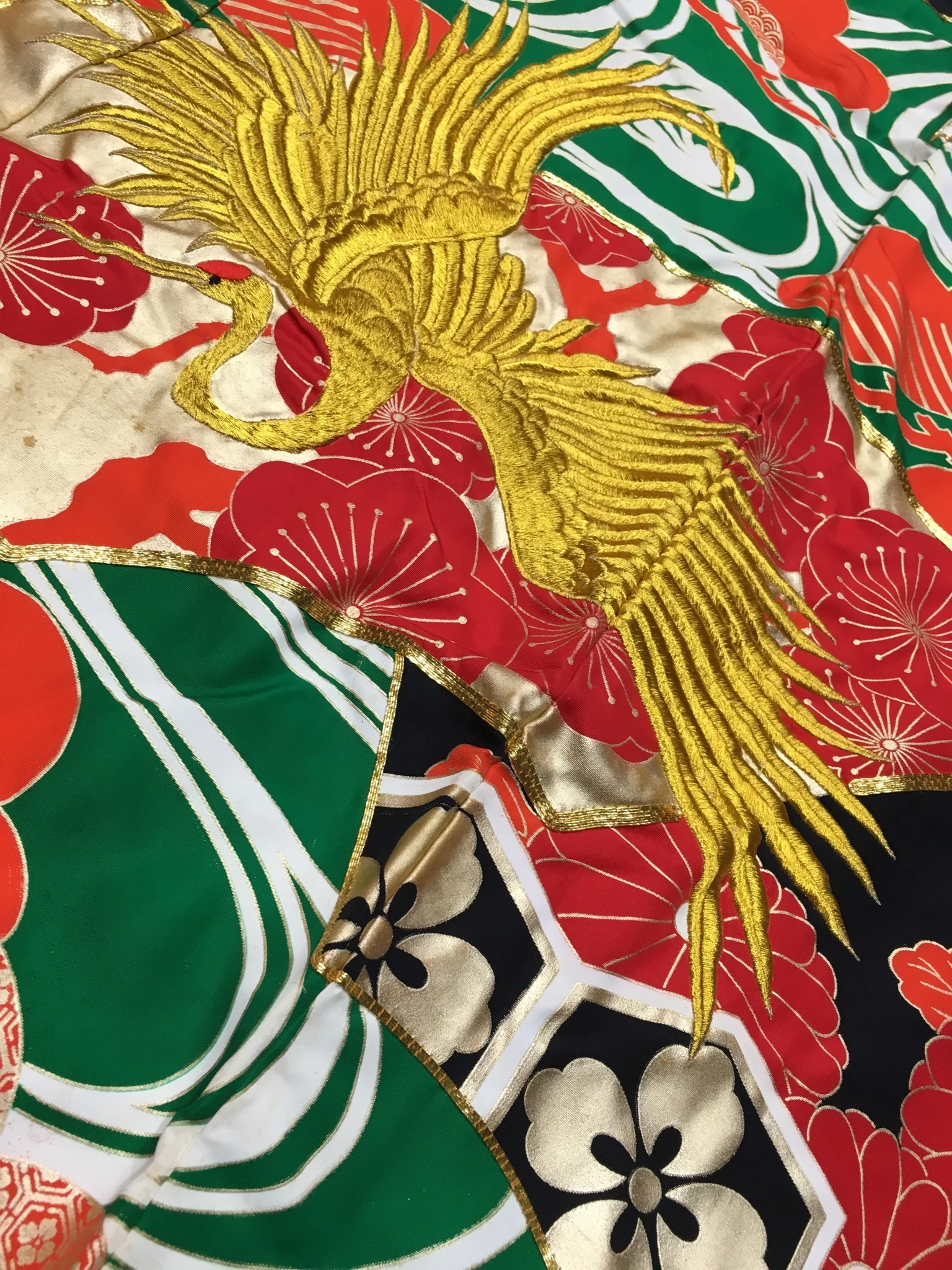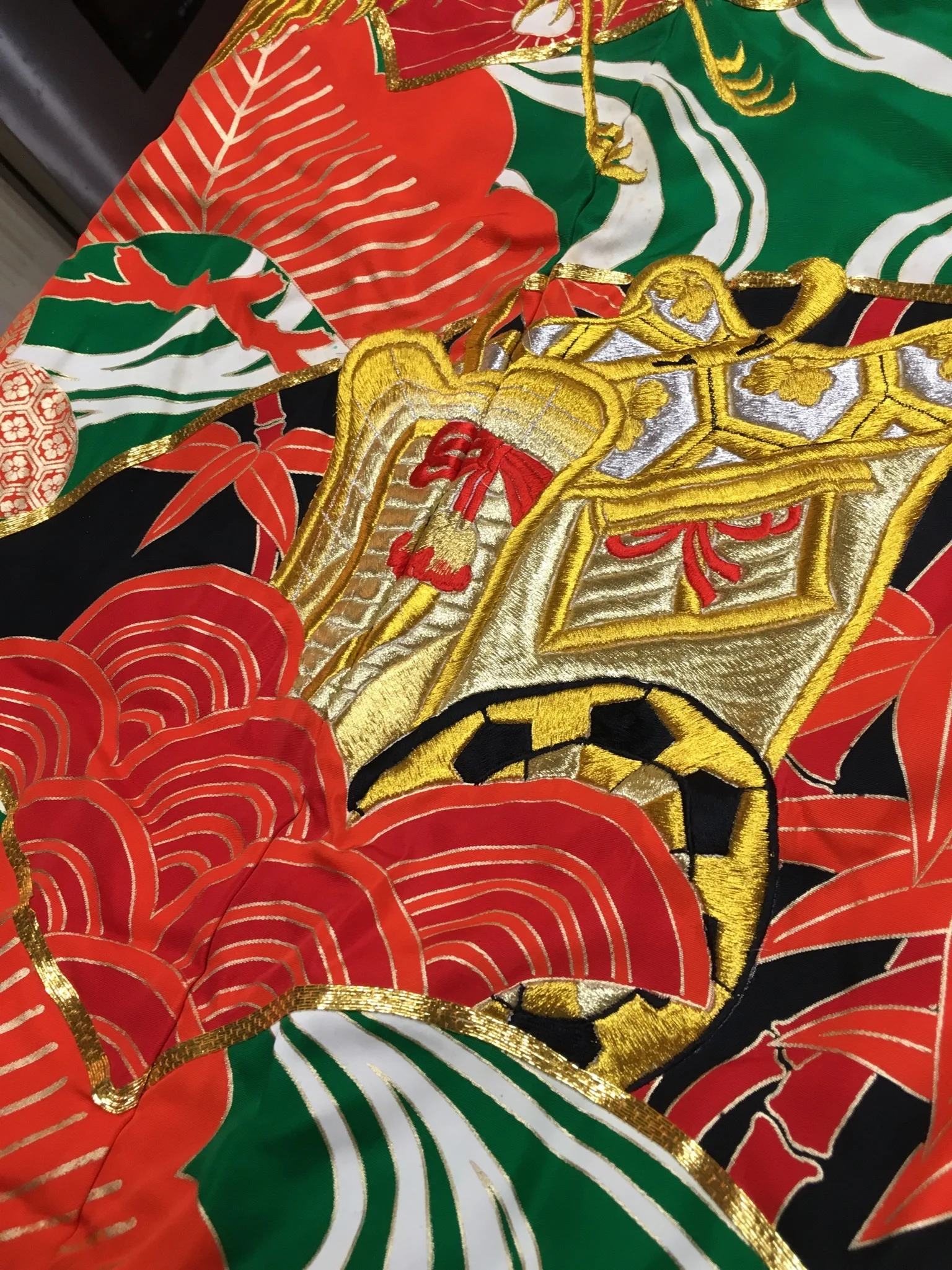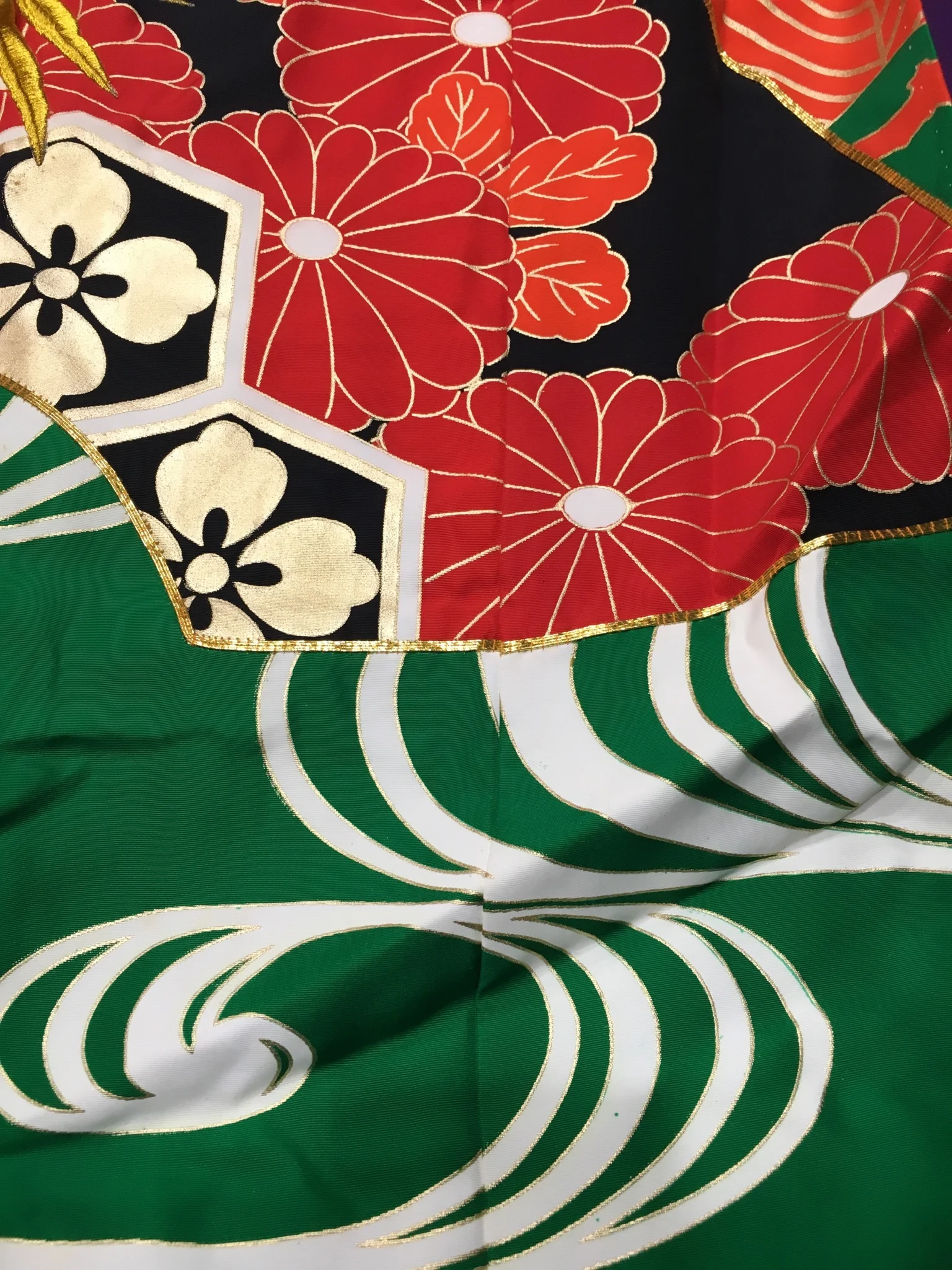Green and Gold Uchikake with Tsuru
Green and Gold Uchikake with Tsuru
This item is a uchikake in green and gold with cart motifs.
silk interior and exterior with a padded hem in like new condition
sign combines stencils and freehand silk dye techniques, gold threads, and gold foil with motifs of waves and cranes.
24 karat gold accents are found in the form of gold wrapped stitching, tracing the contours of the design. Gold is also applied in stencils to accent the design.
Decoration and Motif Notes
An uchikake is a lined silk robe with a wadded or padded hem, worn over another garment without a sash, usually for formal occasions or stage performances. Such outer robes often feature a layer of silk filaments between the outer “ground” fabric and the lining, and the wadded hem was intended to add weight to the lower edge of the garment, helping to preserve its straight line. This example was made as a wedding garment and accordingly displays a wealth of auspicious symbols in its decoration.
Decorations are executed with tsutsugaki yuzen (rice paste resist painting) and hand painting. With a dyeing technique invented in 17th century Kyoto, a mixture of rice paste and soybeans is used to draw delicate free-hand linear motifs on the silk. An artist squeezes the paste through a funnel-shaped container much like a small pastry bag. After this paste resist dries, he paints the areas on both sides of the lines with brushes, using the desired dye colors. Delicate shaded effects can be created, and the rice paste outlines prevent the dye from seeping into surrounding areas. Even broad expanses of the background color are dyed in this manner -- by hand painting. In the creation of this uchikake, the silk was first hand painted with designs in a deep green and several shades of red and cream. The background designs are stylized waves in green and white, with alternating regions of shades of red.
Gold and silver threads are made of foil applied to thin membrane or paper strips which are wrapped around silk threads. These metallic threads cannot be stitched through the silk fabrics, so they are traditionally "couched": laid on the fabric surface and stitched down with fine silk threads. The technique is called shusu. The edges of the wave motifs have gold couching on the edges of the painted wave designs. The gold couched threads are laid in a line around the wave motifs, adding a golden radiance that is echoed by the application of gold foil along the edges of the waves.
Gold metallic foil is applied to the fabric surface, creating lavish effects. Rice paste is first applied to the fabric in design areas -- either drawn freely or stenciled. Then metallic leaf is pressed onto the partially dried rice paste. The foil falls away in surrounding areas. In the past, surihaku decoration was widely used on dramatic Noh theatrical costumes, and its use continued on lavish formal kimono and ceremonial uchikake wedding kimono. Gold foil is used lavishly in this uchikake. Fine lines of gold are applied to the wave motifs all over the background.
The Japanese artisan who created this uchikake used embroidery to create opulent effects on this kimono . With silk floss and variations on the "long and short stitch" or satin stitch, hira-nui, they have built up entire three-dimensional chrysanthemum motifs, as in the flowers below. The embroidered tsuru motifs in this uchikake are bright gold, with three dimensional effects within the wings of the cranes.









